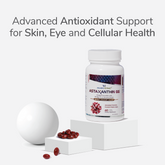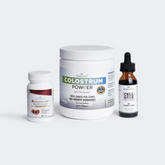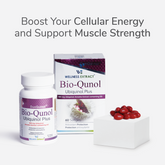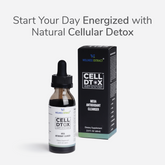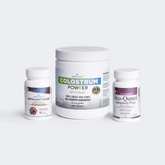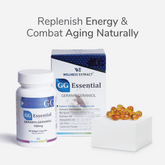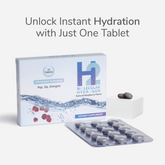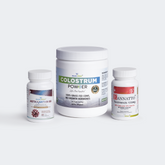Estimated Reading Time: 8 minutes
|Annatto extract has always been the go-to natural color dye. Lately, however, it has also been discovered to have potential health benefits. What makes annatto a powerful remedy?
Annatto, Bixa orellana, also known as achiote, is a flowering shrub native to Central America. For centuries, annatto and its extract have been treasured for their deep red color. Ancient people used annatto in body painting and even as an insect repellant. It is also used as a food dye and even as a flavoring agent in Latin and Caribbean dishes.
The best part is that, unlike other coloring or flavoring agents, it has no side effects. However, it's no longer just a color or flavor! Innovation in science and technology has decoded the hidden health potential of annatto and its extract.
Here is a detailed blog about the annatto extract and its uses!
A Quick Introduction to the Annatto Plant and Its Extract
Before exploring the constituents of the annatto extract, let's quickly build an understanding of the plant itself.
Spanish explorer Francisco de Orellana noticed Annatto for the first time around the Amazon River in the late 1500s. It is an evergreen shrub that can reach up to 6-10m under ideal conditions. The plant bears white and pink flowers, resembling wild roses, but that's not its signature characteristic.
The reddish-brown fruits covered in spikes are the center of attention in annatto, which contains 10-50 tiny seeds. These seeds are packed with vibrant pigments, giving them a striking red-orange hue. Ancient indigenous civilizations, like the Aztecs, used annatto to extract red dye for food and fun. Later, people used the extract in the preparation of lipstick, from which annatto got another popular name: lipstick tree.
Find More: What Is Annatto? From Ancient Dye to Modern Health Hero
How to Prepare Annatto Extract
Annatto extract comes from the seeds of Bixa orellana.
It can be made by:
-
The DIY method: Steep the annatto seeds in oil or grind them into fine powder manually.
-
Commercial method: Remove pigments from the outer layers of the seeds during extraction.
While the primary use of extracts is to add color and aroma to food, they also hold medicinal benefits. In traditional medicines, annatto extract has been helpful in wound healing and inflammation reduction.
Properties of Annatto Extract
Based on the extraction process, the powder carries a certain physical and chemical composition.
1. Physical Properties
Annatto extract is biodegradable, non-toxic, and heat stable, with a melting point of 190 °C. Its properties and vibrant yellow-orange color remain stable under heat and oxidation but may degrade at temperatures above 125°C.
2. Chemical Properties
The magic and versatility of annatto extract lies in its chemical composition, which includes.
- Carotenoids
Bixin and norbixin are the primary pigments of annatto extract, which are also responsible for its color and solubility. While bixin is fat-soluble, norbixin holds water-soluble properties. Norbixin is responsible for the yellow color, and bixin gives the extract a distinctive orange color.
- Tocotrienols
Now, here comes the king constituent of annatto that offers surprising health benefits. Annatto seeds contain the highest percentage of delta tocotrienols, the most potent Vitamin E form. Tocotrienols may help with gut health, anticancer therapy, managing cholesterol levels, and much more. They are a powerful antioxidant that inhibits oxidative stress, maintaining cellular health.
Read More: The Complete Guide to Vitamin E Tocotrienols: 2025 Edition
- Geranylgeraniol (GG)
Annatto seeds also contain a significant amount of geranylgeraniol (GG). Geranylgeraniol is an endogenous compound, biosynthesized in the mevalonate pathway. Preliminary studies suggest that it facilitates the production of crucial coenzymes, including ubiquinone (CoQ10) and menaquinone.

Present-Day Uses of Annatto Extract
Annatto extract finds use in food, nutrition, cosmetics, and pharmaceuticals in the following ways:
1. In Food Industry
Annatto is a popular food coloring agent with no adverse health effects. You might be amazed to know that 70% of all natural food coloring comes from annatto. It can deliver intense yellow or orange color, making it useful for coloring edibles, including cheese, butter, cakes, baked goods, meat, and ice cream. Further, annatto extract has a distinguished sweet, peppery taste and is used in different cuisines.
2. In Cosmetics Industry
The FDA permits the use of annatto in personal care products, such as coloring agents in makeup and cosmetic products. It delivers the desired color to lipsticks, nail paints, eye shadows, and even hair dyes.
3. In Health and Wellness
Now, that's the most interesting use of annatto extract. With successful research and studies, annatto extract has found a place in the health supplement market. One of the most common examples is annatto-derived vitamin E tocotrienols, which support bone, heart, and body metabolism.
4. In Medical Field
Even in the medical field, healthcare professionals use annatto-based products along with certain drugs. They work synergically with the principal drug, suppressing its adverse pharmacological effect. For instance, geranylgeraniol supplementation, when taken with statin drugs, has the potential to reverse their side effects. Statin is a cardiovascular drug that indiscriminately reduces cholesterol levels, resulting in vitamin K and CoQ10 deficiency. Additionally, it shows significant anti-inflammatory actions. It may also have antibacterial and anticancer benefits.
Find More: A Comprehensive Guide to Geranylgeraniol GG Supplement

What Does the Future Promise
Though present uses of annatto extract are limited, the future holds endless possibilities. Numerous studies highlight the health potential of annatto and its extract. Here is a quick summary:
1. Anticancer Properties
Test-tube studies highlight that annatto extract can suppress cancer stem cells, slowing down the tumor. The presence of carotenoids and tocotrienols renders the anticancer properties to the annatto extract. Studies have found that annatto can improve fatal conditions in prostate, ovarian, and liver cancer.
2. Optical Advantages
Annatto extract contains a significant amount of norbixin, which may contribute to improved vision. In an animal study, rats supplemented with norbixin for 3 months noticed a reduced accumulation of the compound N-retinylidene-N-retinylethanolamine. The compound is directly linked to age-related irreversible blindness.
3. Antioxidant Properties
The presence of high free radicals in the body is often related to chronic conditions like cancer, stroke, Alzheimer's, or tumors. Thus, antioxidation is an essential biological process for optimal cell growth. With an abundance of tocotrienols, annatto can resist oxidative stress, neutralizing free radicals.
4. Anti-inflammatory Action
Research suggests that annatto may block the inflammatory actions of bradykinin and nitric oxide. Even a preclinical study highlighted that annatto extract brings down allergies or swelling. However, proper human research is still required to explore the benefits thoroughly.
5. Cardiovascular Benefits
Annatto extract is a good source of vitamin E tocotrienols. Tocotrienols react with LDL cholesterol, removing it from the bloodstream. Not only that, in scientific studies, norbixin has significantly increased HDL cholesterol. Thus, by maintaining healthy cholesterol levels, annatto may improve overall cardiovascular health.
6. Antimicrobial Effects
In test tube studies, annatto extract has shown antimicrobial properties. It inhibits the growth of certain bacteria, including Staphylococcus aureus and Escherichia coli. That's how it can also indirectly contribute to overall gut health. Another interesting study found that pork patties with annatto powder suppress microbial growth compared to untreated patties. However, we still need large-scale studies to confirm the accuracy and functioning of the mechanism.
Read More: Versatile Uses of Annatto Plant.
Alternative to Annatto Extract
Apart from extract, annatto comes in different forms, and each one has its uses.
-
Annatto Seeds: Annatto seeds are the direct part of the plant. They are rich in antioxidant and carotenoid content, making them useful for the pharma and wellness industry.
-
Annatto Paste: Annatto paste is the grounded version of the seeds. It is often available with other herbs and spices like cumin and coriander. Annatto paste is an active ingredient in Mexican, Central American, and Caribbean dishes.
-
Annatto Oil: Annatto oil can add an appetizing orange-red color to meals. Cooking annatto seeds in edible vegetable oils like olive, corn, or canola prepares a fresh batch of annatto oil.
-
Annatto Powder: Annatto powder is simply the powder of annatto seeds, which is used in the food industry. It is also an active ingredient in dyes, paint, and cosmetics.

How to Take Annatto Extract Supplements?
Well, the good news is that there are GRAS-certified annatto-rich supplements available in the market that you can take as Vitamin E antioxidants. You can prefer the soft gel capsule form for easy administration. The supplements fulfill the optimal requirement of Vitamin E that a regular diet often lacks.
Are There Any Alternatives to Annatto Extract?
Here are some alternatives to annatto extract:
- Paprika
- Chili powder
- Harissa
- Sazón seasoning
However, there is another drawback: this option can replace the annatto flavor and color but doesn't have its medical properties.
Associated Side Effects of Annatto Extract
There are no significant adverse effects of annatto extract. However, a few individuals complain about stomach pain, itchiness, swelling, low blood pressure, and hives.
Quick Recap
Annatto extract, made from the annatto or achiote tree, is a multipurpose ingredient. Indigenous tribes have been using annatto for centuries as a food ingredient, cosmetic, dye, and medicine. Recent research in science and wellness has reflected its potential health properties. Over time, it will be interesting to observe how annatto and its extract can revolutionize humankind.
Disclaimer: These statements have not been assessed by the FDA. The information contained within this page is for educational purposes only. It is not intended to replace the advice or attention of health care professionals.
Key Takeaways
- Annatto's red-yellow color is due to the presence of carotenoid, which is protected with tocotrienols, the most potent form of Vitamin E.
- With its deep yellow-red hue, annatto is the primary source of up to 70% natural food dyes.
- Annatto-derived tocotrienols may support heart health, bone health, cholesterol management, and gut health.
- Annatto is a rare source of geranylgeraniol (GG), an essential compound in the body's biosynthesis of coenzymes.
- The FDA has approved annatto extract as a safe and effective natural colorant for cosmetics such as lipsticks and nail polishes.
References Used:
- https://pmc.ncbi.nlm.nih.gov/articles/PMC4856788/
- https://pubchem.ncbi.nlm.nih.gov/compound/Annatto
- https://www.cosmeticsinfo.org/ingredient/annatto/
- https://www.fda.gov/cosmetics/cosmetic-ingredient-names/color-additives-permitted-use-cosmetics
- https://pubmed.ncbi.nlm.nih.gov/36296960/
- https://cancerci.biomedcentral.com/articles/10.1186/s12935-019-0876-0
- https://pmc.ncbi.nlm.nih.gov/articles/PMC5161507/






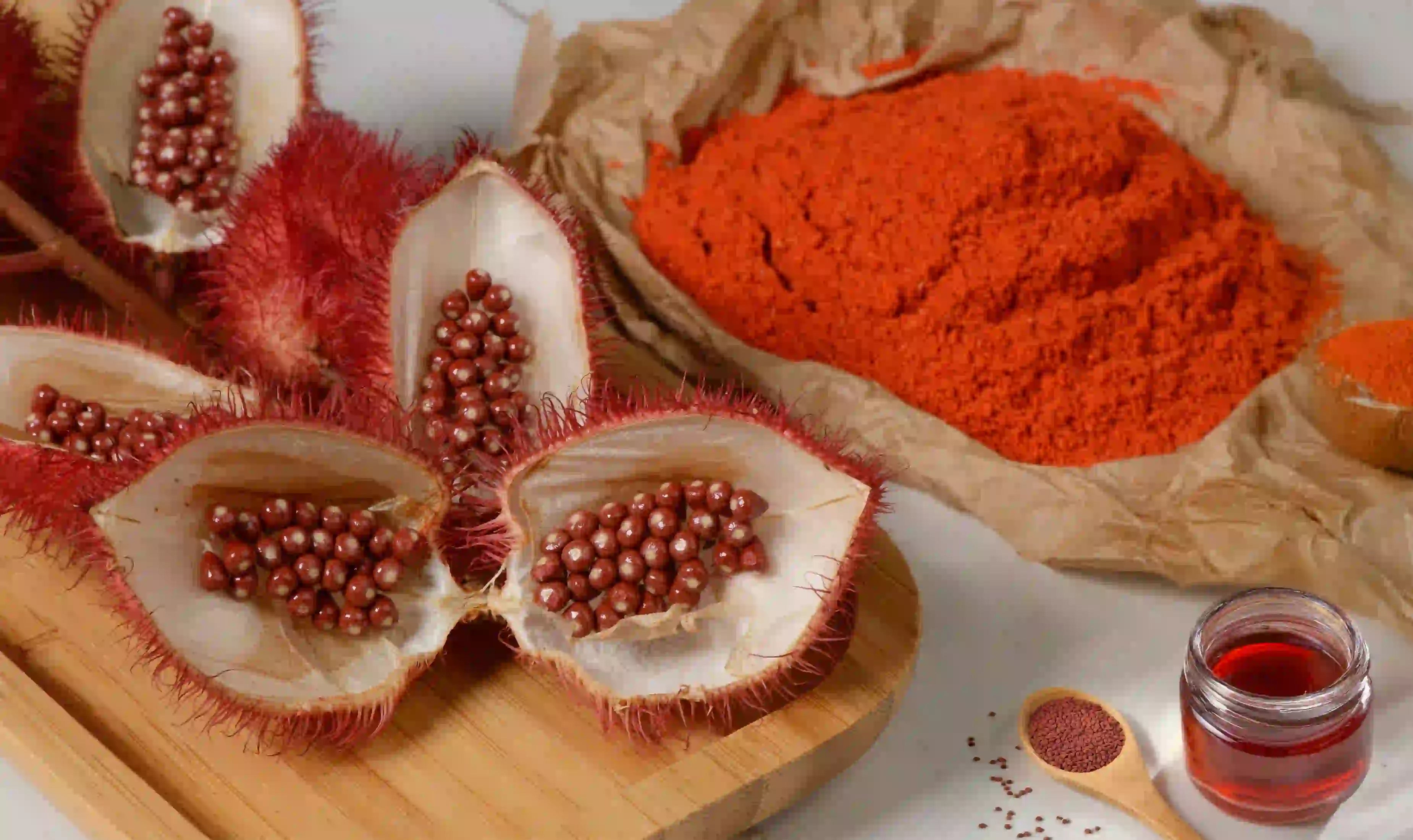






![Top 5 Best Vitamins for Men in Their 30s [Backed by Science!]](http://wellnessextract.com/cdn/shop/articles/Vitamin_for_men_8fe0fe21-19b1-4020-b895-dc104449637e_165x.webp?v=1765878148)




